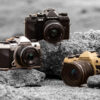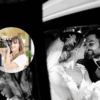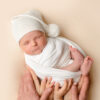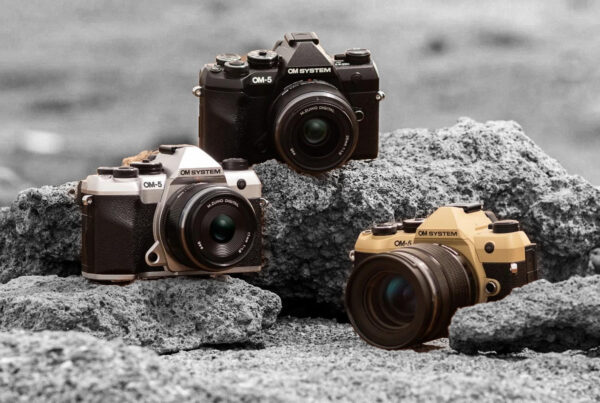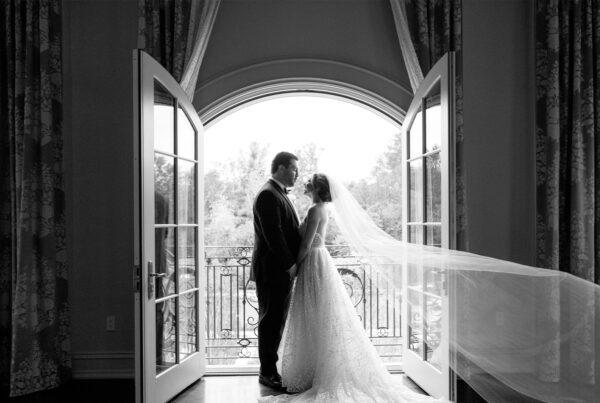Like putting together a complex puzzle, the various pieces of wedding photography equipment are all necessary to capture the magical moment. Photographing weddings in various settings and with varying lighting conditions has taught me that it’s more important to know how to use each piece of equipment well than to own the best gear. Knowing when and how to deploy the correct equipment for the greatest impact is just as difficult as choosing the proper equipment. From the private moments of getting ready to the fun-filled reception climax, I’ll show you everything you need to know about wedding coverage in this detailed guide.
Building Your Core Kit
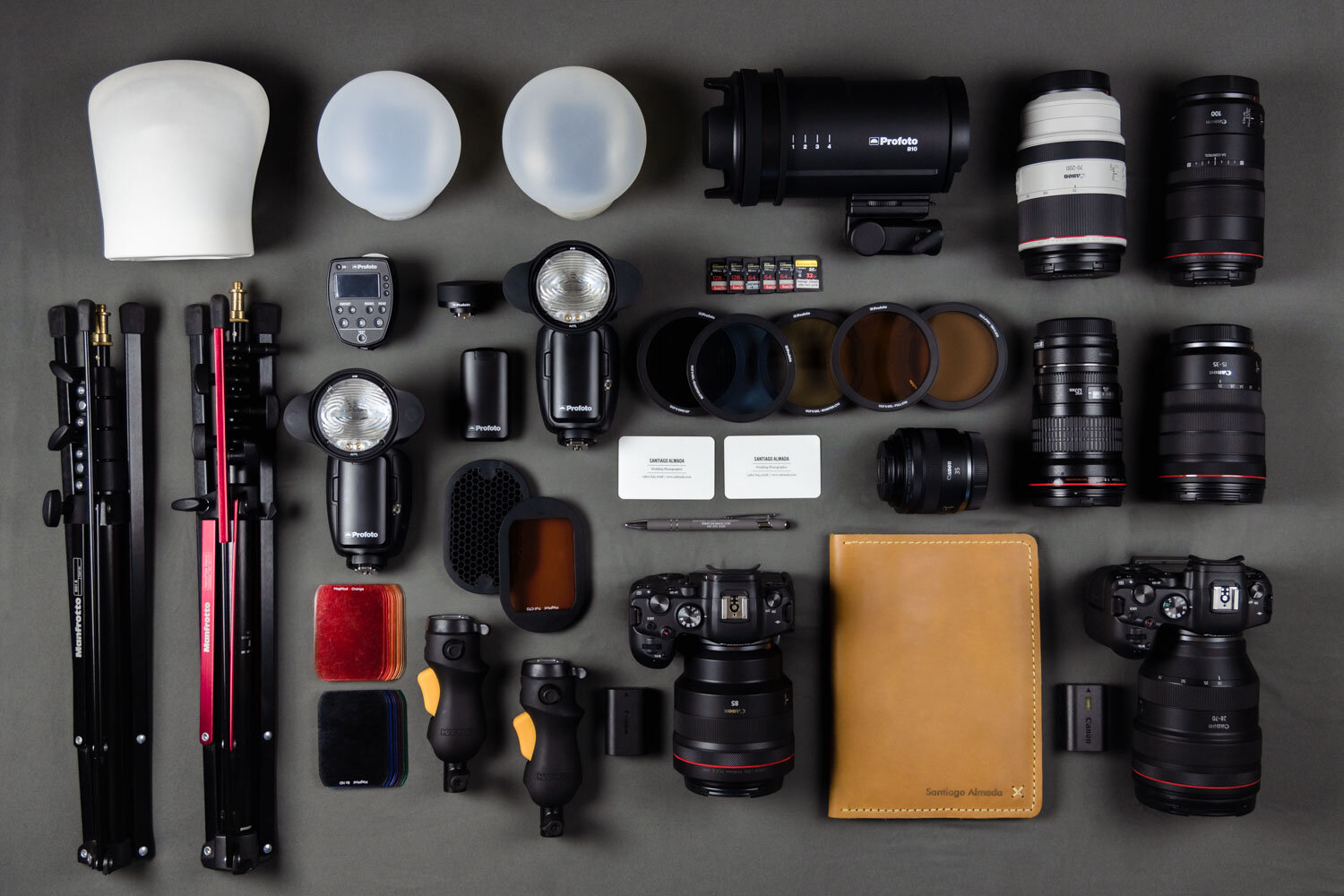 Credit: Santiago Almada Photography
Credit: Santiago Almada Photography
A versatile and dependable tripod should be the backbone of any wedding photography gear. After shooting a large number of weddings in less-than-ideal lighting situations, I can say with confidence that having two full-frame cameras is not a luxury but a need. The Canon R6 II serves as my secondary camera, while the Sony A7IV is my primary tool. Given the unpredictable nature of wedding day conditions, this combination offers the necessary low-light performance, autofocus reliability, and adaptability. To put less emphasis on technical details and more on composition and the moment, it’s important to have cameras you trust completely.
Essential Core Equipment:
- Two full-frame camera bodies with dual card slots
- Professional zoom lens trinity (16-35mm, 24-70mm, 70-200mm)
- At least two fast prime lenses (35mm, 85mm recommended)
- Professional-grade flash system with multiple units
- Complete range of memory cards and batteries
- Backup equipment for critical components
Getting Ready: Making Magic in Tight Spaces
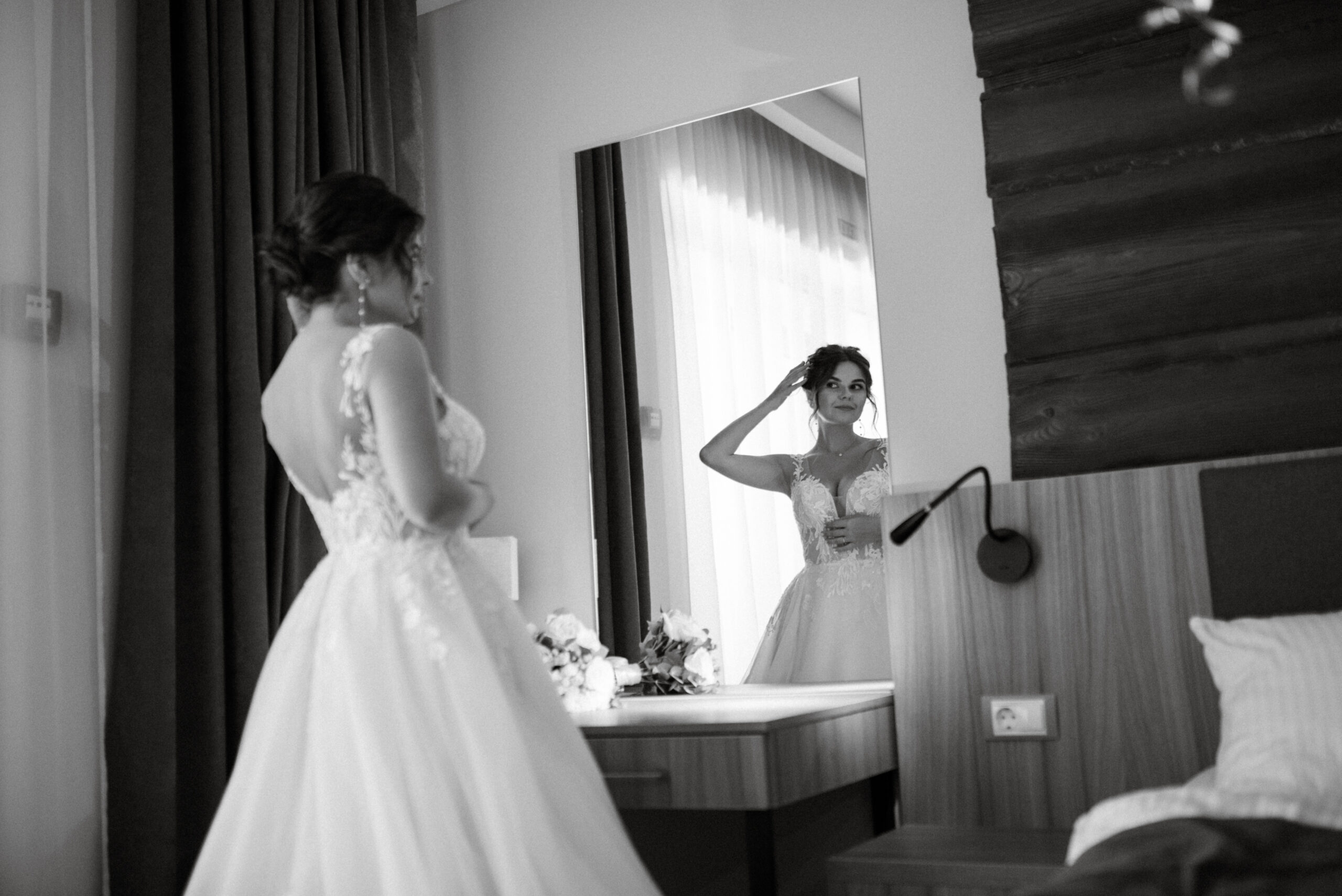 Careful consideration of equipment selection and setup is required during the getting ready phase due to the specific problems it brings. Rooms in hotels and bridal suites sometimes have limited space and difficult lighting, so you’ll need gear that’s both small and adaptable. My extensive experience in various settings has taught me that a simple, powerful arrangement works best. You can walk freely while still preserving the intimate environment of these early morning moments with this method. Choosing multipurpose furniture that doesn’t take over the room is the key.
Careful consideration of equipment selection and setup is required during the getting ready phase due to the specific problems it brings. Rooms in hotels and bridal suites sometimes have limited space and difficult lighting, so you’ll need gear that’s both small and adaptable. My extensive experience in various settings has taught me that a simple, powerful arrangement works best. You can walk freely while still preserving the intimate environment of these early morning moments with this method. Choosing multipurpose furniture that doesn’t take over the room is the key.
Essential Core Equipment:
- Mirrorless camera body with silent shooting capabilities
- 35mm f/1.4 for environmental context and room coverage
- 85mm f/1.4 for portraits and emotional moments
- Macro lens for detail shots (rings, jewelry, invitations)
- Compact LED panel for consistent detail lighting
- Single speedlight with bounce accessories
- 32″ collapsible reflector for fill light
When it comes to preparation coverage, lighting is of the utmost importance. Shadows and uneven color temperatures caused by conventional hotel lighting might ruin your photos. The best, most attractive results, in my experience, come from a mix of natural light streaming in via open windows and artificial light from strategically placed LED panels and the occasional flash. As an example, detailed photographs are greatly enhanced by the LED panel’s steady illumination, which does not overrun small spaces.
[For an in-depth look at preparation coverage, read our detailed guide: “Wedding Getting Ready Spaces Photography: Professional Equipment Solutions“]
Ceremony Coverage: Silent Precision
Preserving private moments during wedding ceremonies without being overly nosy is a fine balance. Over many years of filming in various sacred settings, I have refined my technique to ensure technical excellence while prioritizing silent operation. To capture the event accurately, you must know your equipment and the location’s limitations. Churches and other sacred locations have strict rules about the movement of photographers and the use of flash, making your equipment choice all the more important.
Essential Ceremony Equipment:
- Primary camera body with advanced silent shooting mode
- Secondary body with similar silent capabilities
- 70-200mm f/2.8 for main ceremony coverage
- 24-70mm f/2.8 for wider processional shots
- Fast prime lens for low-light conditions
- Monopod for stability during long ceremonies
- Discreet audio recorder for vows (when permitted)
[Master ceremony coverage with our guide: “Silent Wedding Ceremony Photography: Advanced Camera Systems for Religious Venues“]
Cocktail Hour: Fast-Paced Precision
 Credit: The Loft on King Street
Credit: The Loft on King Street
Among the most difficult parts of covering a wedding is the cocktail hour, since it calls for quick changes between camera angles and subjects. During this time, being technically proficient isn’t enough; you also need to be able to make smart equipment decisions that will allow you to respond quickly to unpredictable situations. The cocktail hour may only last a short while, but it usually ends up producing the most heartfelt, spontaneous moments of the whole wedding.
Essential Cocktail Hour Equipment:
- Dual camera harness system
- 24-70mm f/2.8 on primary body
- 85mm prime on secondary body
- Compact flash system for quick setups
- Light modifiers that pack flat
- Belt system for quick lens changes
A high level of mobility is crucial at this point. Once your gear is properly set up, you should be able to quickly capture group photographs, capture guests’ genuine emotions, and effortlessly capture the venue’s architecture. You may avoid missing any of those incredible, unanticipated moments by using a twin camera harness with many focal lengths instead of constantly switching lenses.
Reception: Mastering Dynamic Light
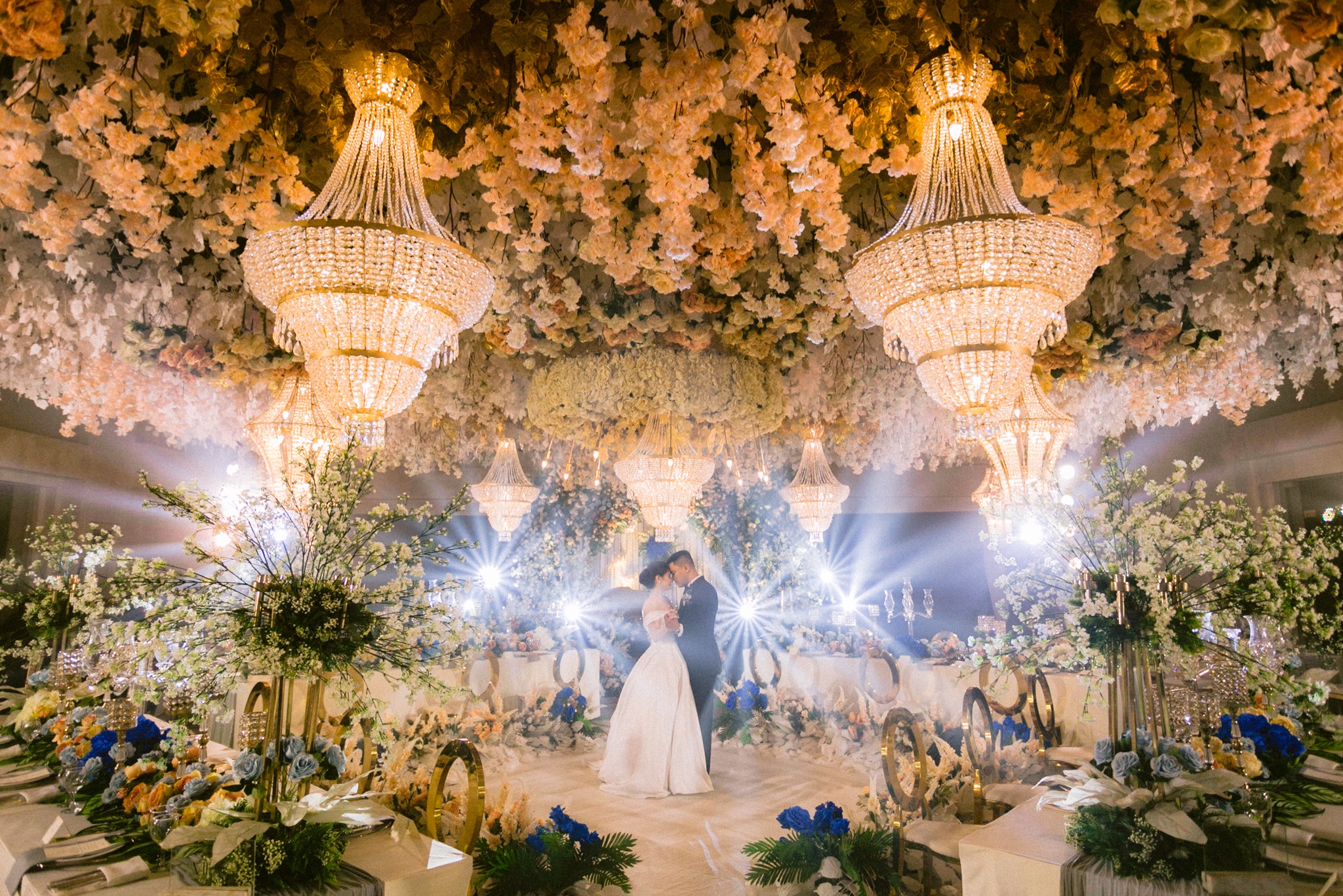 Credit: Foreveryday Photography
Credit: Foreveryday Photography
The technical demands of wedding reception photography are among the highest. A methodical strategy for camera and lighting equipment is necessary due to the continual change in ambient light conditions, different color temperatures, and subjects moving at high speeds. I have developed a method that consistently captures memorable moments during receptions while still being adaptable enough to handle the unexpected. This method has been fine-tuned over hundreds of receptions. To keep the mood while getting technically great shots, you need to know how to blend natural light with artificial lighting.
Essential Reception Equipment:
- High-ISO capable primary and secondary bodies
- Fast zoom lenses for varying distances
- Three to four speedlights for room coverage
- Wireless triggering system with multiple groups
- Selection of light modifiers and gels
- Backup flash units and triggers
- Stable light stands with safety weights
Establishing a lighting setup that is both constant and flexible is crucial for effective reception coverage. As a standard practice, I arrange three flashes, each with its own power configuration and modulator options, in a triangular arrangement around the dance floor. In doing so, we build a versatile lighting ecosystem that is well-suited to both low-key dances and high-energy parties. You can easily change the lighting as the night goes on because each light may be controlled separately using a wireless system.
Emergency Preparedness and Equipment Management
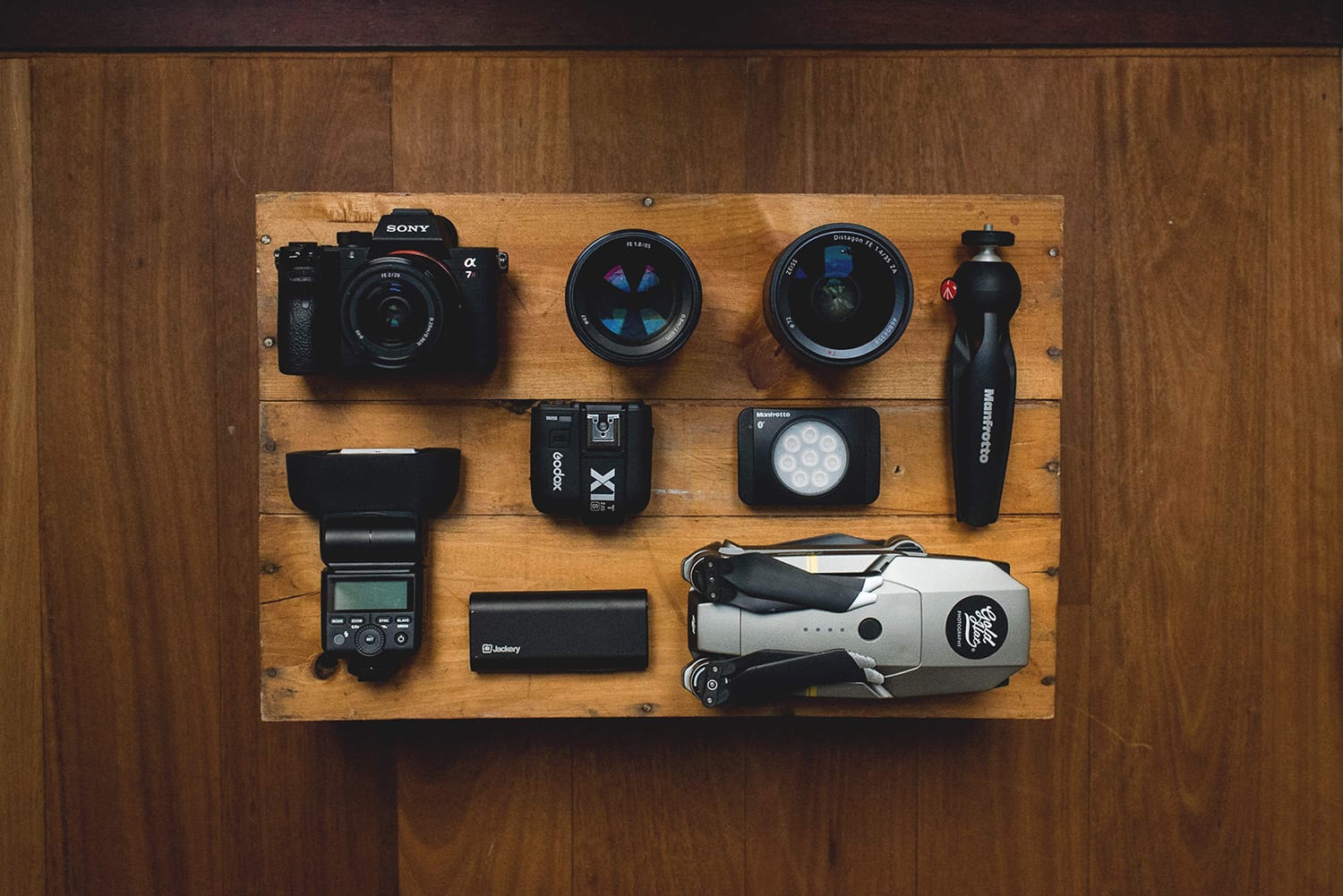 Credit: Contrastly, Mark Condon
Credit: Contrastly, Mark Condon
Perhaps the most important lesson I’ve learned through years of wedding photography is that preparation extends far beyond having good equipment—it’s about having systems in place for when things don’t go as planned. Equipment failures, weather changes, and venue challenges can all arise unexpectedly, making a comprehensive backup strategy essential.
Critical Backup Equipment:
- Additional camera body pre-configured with familiar settings
- Core lens selection duplicates
- Extra flash units and triggers
- Multiple battery sets for all devices
- Variety of memory cards
- Basic tool kit for equipment repairs
- Weather protection gear
Emergency scenarios require more than just backup equipment; they demand clear protocols for various situations. I maintain a detailed checklist of procedures for common issues like camera failure, lighting problems, or memory card corruption. This systematic approach ensures that technical challenges don’t compromise the coverage of critical moments.
Final Thoughts
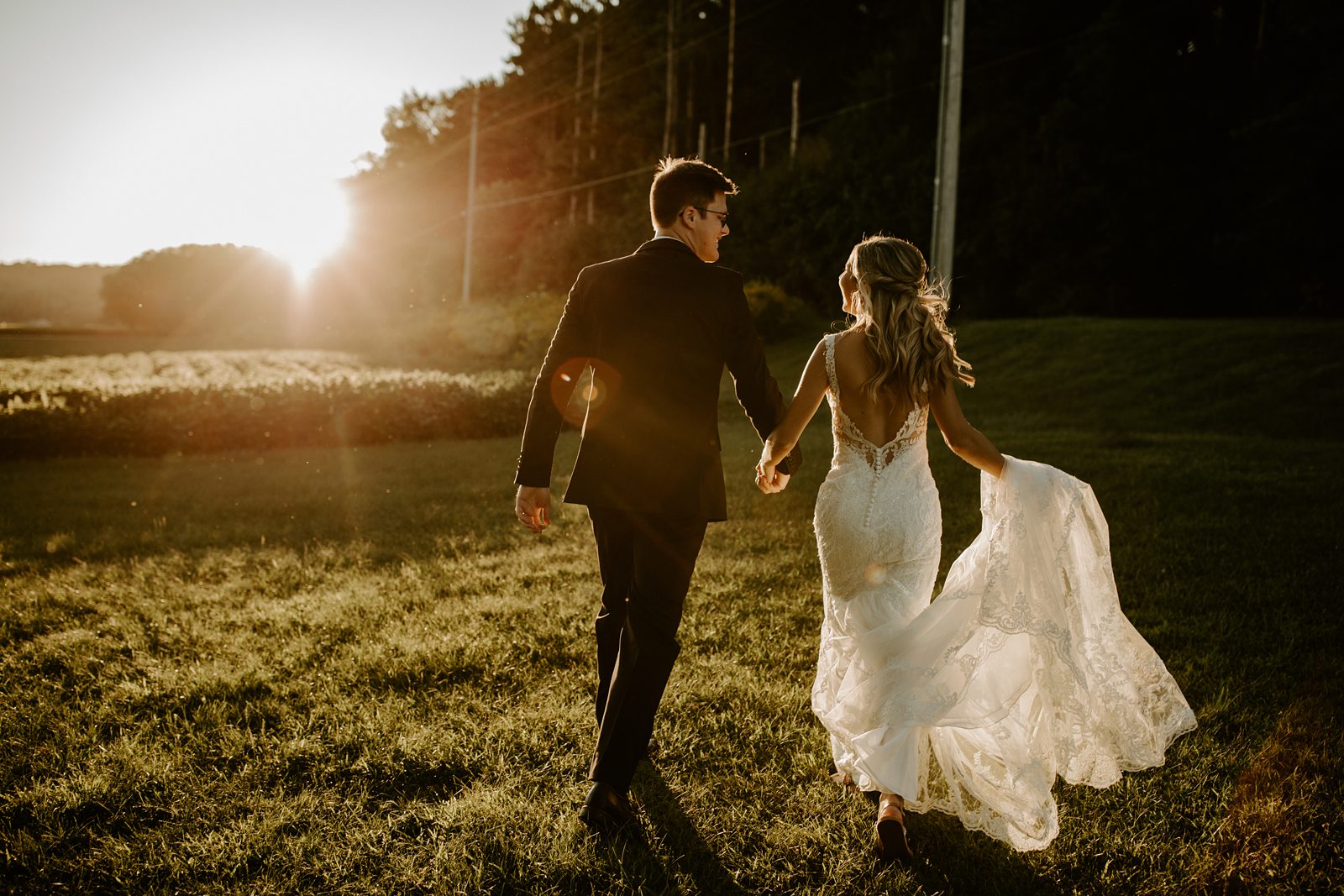 Credit: Two Pines Photography
Credit: Two Pines Photography
When shooting weddings, it’s crucial to have high-quality equipment and to know how to use it properly. While this guide provides a comprehensive overview of what you’ll need on the big day, it’s important to remember that no two weddings are alike, so expect some unexpected surprises. Gain the self-assurance to conquer any challenge by consistently honing your skills with your gear and by always learning and adapting to new circumstances.
These methods and advice are derived from years of practical experience, but they should not be considered absolute. As you build your own method, you can adjust these tips to fit your individual demands and shooting style.
Be sure to peruse our extensive supplemental articles to have a better understanding of certain tools and methods utilized in wedding photography. These resources will teach you what you need to know about covering a wedding.



